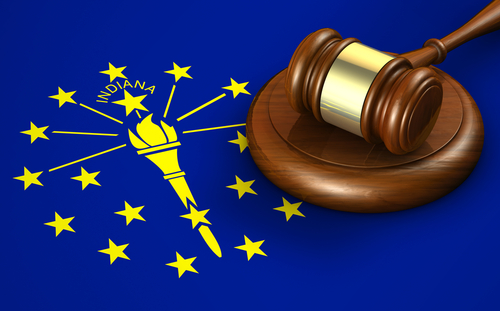Talking Bluetooth
In Scandinavian history, Harald Bluetooth was a Viking king of Denmark around the turn of the last millennium. The nickname “Bluetooth” didn’t have anything to do with dental hygiene; it came from his very dark hair–rare for a Viking.
According to www.bluetooth.org, the member Web site for the company that adopted his sobriquet for its products, King Bluetooth was known for his ability to help people communicate.
Believe that if you wish. In this column, Messrs. Beckman and Hirsch decided instead to debate the issue of whether modern, Bluetooth-compatible electronic devices really help people communicate, just like the legendary king, or are just another electronic level up the modern Tower of Babel.
Beckman: Bluetooth is a short-range written standard for connecting devices in a way that allows them to work together without wires.
Hirsch: Seems to me that is less a definition and more an aspiration.
B: I went into Staples recently and asked whether they had any Bluetooth devices for sale. At first they said no. But after doing some searching, they came up with a Bluetooth earpiece and microphone for cellular telephones. It was a $150 Jabra FreeSpeak Mobile Headset.
H: For $15 one could get a wired headset and microphone. The wire from an ear to a cell phone is hardly geographically limiting.
B: You may be right with respect to this particular product. However, a UConnect device (a speaker, microphone and some programming that connects to a cell phone) builds Bluetooth into a car.
I insisted it be installed in my new Jeep. Situated in the rearview mirror or in the dashboard, when you bring your Bluetooth-equipped cell phone into the car, the phone becomes voice-activated and hands-free. Leave the phone in your pocket or purse, and your phone functions like it is part of the car.
Caveats and the Courtroom
H: That car installation is a positive both for safety and convenience. But it turns out that of all the Bluetooth cell phones, only 12 are feature-compatible with UConnect in your Jeep. So much for standards.
Bluetooth is billed as eliminating the need for wired connections between electronic products. That sounds great. But even when it works, it generally only goes for about 30 feet. That’s good enough for a cell phone that is in your pocket, but it’s not enough distance for some courtroom situations where you might want to remotely control a computer, a projector or another device.
B: Courtrooms today tend to be smaller. And the fact that only 12 phones currently are feature-compatible in my Jeep is not the fault of the Bluetooth standard. This is a situation of selecting the right tool for the right job. For instance, one might want to use a Bluetooth cell phone to connect a laptop computer to the Internet when traveling, or even to connect a pocket PC to the Internet. It should be easier than cabling the devices together. In other situations, such as where distance is an issue, Wi-Fi may work better.
H: My dream is to walk into a courtroom with a laptop or a pocket PC, along with three or four freestanding monitors, maybe a small printer and a few other peripheral devices, and then–with no wires–to have them all seamlessly interact and stay charged for a full day of trial.
B: That dream is not practical today. Furthermore, Bluetooth was not designed to do all that you dream.
H: Maybe. But it seems to me that many of the current Bluetooth products are silly. Snap a low-quality photo on your cell phone, beam or broadcast it to others. Is this real work? A wireless earpiece instead of a wire that goes 10 inches to the cell phone in your pocket, a wireless mouse (that is just something to lose), Bluetooth Samsonite luggage (apparently it’s true) – are these achievements the Viking Bluetooth would be proud of? I think not.
B: Don’t blame the protocol for the way people use it. and give it a chance. Who knows what that luggage may do? (The working version isn’t available in the State yet.)
Bluetooth does have the potential to be revolutionary. There is no question that over time, wires will tend to disappear and seamless integration will increase. The demand is strong.
But a complete solution is not instant. Bluetooth is not a replacement for all other technologies. The intent is to combine it with other technologies.
Today, Bluetooth may be used as a remote control, keys, tickets, and a way to access e-cash, exchange information or synchronize files. We cannot foresee all of its future utility, particularly when combined with other tenchologies.
H: Then it seems to me it should be approached with caution. If Bluetooth can solve a problem for you now, one that pays for itself inside of a year, great. Otherwise, I would wait for that bright future you see.
B: I agree that you should buy it when you can use it. But if you are purchasing significant hardware where Bluetooth compatibility does not cost much more, you might consider it, even if you don’t see yourself using it right away. Do no minimize the problems that are solved right now. Bluetooth cell phones in a car, letting your pocket phone function like a built-in speakerphone complete with voice commands, is huge progress.
The world is made up of many small problems; the solution of any of them should not be belittled. If all Bluetooth did was reduce the amount of spaghetti wire that surrounds most desks, that would be sufficient. It can do much more.
David Beckman and David Hirsch practice in the law firm of Beckman & Hirsch in Burlington, Iowa. Contact Beckman by e-mail at [email protected] or Hirsch at [email protected].



